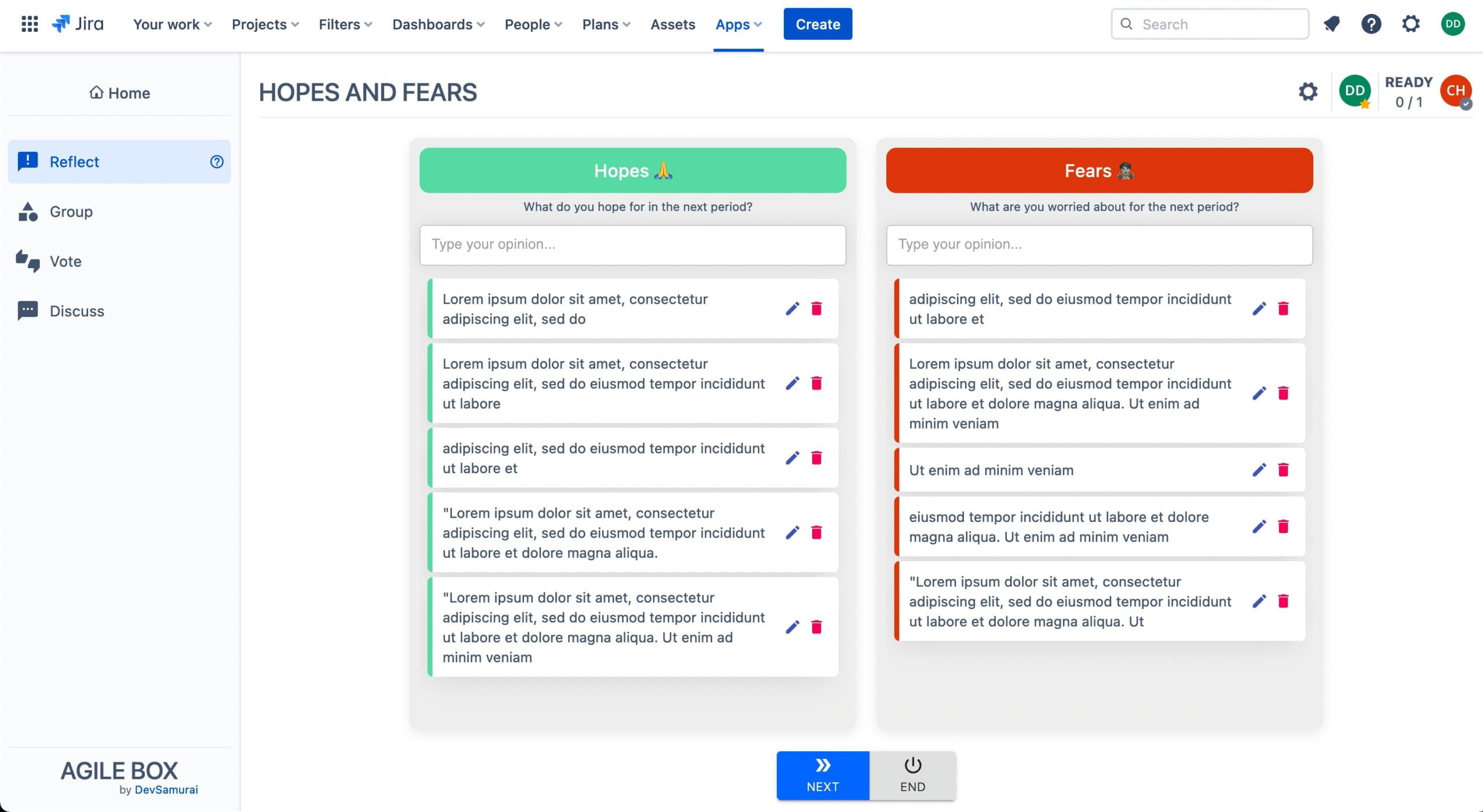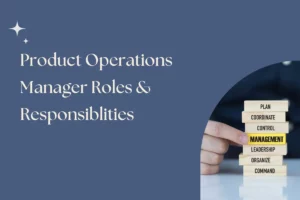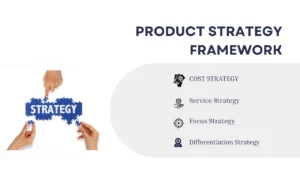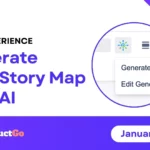Table of Contents
A meeting encouraging team members to share, validate feelings, bond with each other, and solve future problems? The Hopes and Fears template can do it all! The retrospective (and futurespective) inspires empathy, openness, safety, and trust by allowing team members to reveal their optimism, ambitions, worries, and concerns. Learn more about the Hopes and Fears retrospective below and how it can help your team!
What is the Hopes and Fears Template?
The Hopes and Fears template is an excellent way for management to encourage connection and teamwork while managing expectations and solving potential pitfalls. It allows all team members to share their hopes (what they are looking forward to, what is driving them, what they want to accomplish) and fears (what is provoking worry, what are their concerns, what are current problems within the team and project, what might hold the work back).
The team extracts validation, perspective, and connection from this exercise. Team members may feel relief from unburdening their worries and hearing how others share these concerns. However, they do not need to wallow in anxiety or stress. They may also gain optimism and revive their spirit by revealing and hearing hopes.
Additionally, management receives extraordinary value from the retrospective. Managers reveal how some aspects of the project affect the work and teamwork. Accordingly, they can actively address these potential problems for future sprints or projects. Likewise, they can manage the expectations of the team, management, and key stakeholders.
What is the Hopes and Fears Format?

Hopes and fears retrospective
The Hopes and Fears template is straightforward and simple. Team members use prompts to reflect on their work, the project, and their team individually. Anonymously, they place items into the Hopes and Fears categories. Let’s take a closer look at these labels:
Hopes
The Hopes category addresses the following questions:
- What are you looking forward to in the next sprint or project?
- What inspires you about your work?
- What are your ambitions in the next section of work?
- What gives you confidence about your team?
- What are positive expectations about the upcoming tasks, sprints, or projects?
- What are the hopes you have for the upcoming sprint or project? What do you want to happen? What do you not want to happen?
Example: I would like to accomplish my tasks quicker than in the previous sprint. It will allow me to receive feedback from my peers and to make changes and improvements, without being under pressure.
Fears
The Fears category looks at the following questions:
- What am I worried about in the future sprint or project?
- What is holding me back from accomplishing my best work?
- What might hold me back in the future?
- What is stressing my team out the most?
- Were there any bad work experiences in the past sprint or project?
- Are there any red flags or warning signs these scenarios may happen again in the next sprint or project?
Example: Our sprint scopes are too large, causing excessive stress amongst the team.
How Can Hopes and Fears Help Your Team?
Undoubtedly, you can already imagine how the Hopes and Fears retrospective can benefit your team and project. The most common advantages groups see include:
- Revived Connection and Teamwork: All teams take time to build a strong bond, but connection-building exercises can help better relationships and teamwork develop. The Hopes and Fears template allows people to be vulnerable with each other, establishing a safe space. It also allows workers to see that their peers are just like themselves, with hopes, dreams, and fears.
- Stress Relief: It can be hard for individuals to view the work at hand from outside of their own perspective. This can be dangerous, especially if they are caught up in their own worries, anxiety, or stress. When they can voice their concerns, their burdens may feel lighter.
- New Perspectives: In the same vein, it can be important for others to hear how others view the work, positive or negative. It may help them have a newfound perspective on the team, tasks, and the project as a whole.
- A Fresh Start: Some sprints or projects can be challenging for everyone. Hopes and Fears helps the team unload their negative experiences, revisit uplifting feelings, and start fresh for the upcoming sprint.
- Problem Solving: Solutions will not be discussed in the Hopes and Fears retrospective. However, it does reveal areas that need work or improvement. Management can bring up these areas amongst themselves or in a future meeting with the team.
- Managed Expectations: Teams, especially management, usually have high hopes for the work. This guided exercise facilitates realistic standards.
Tips for Using the Hopes and Fears Template
While the Hopes and Fears template is straightforward, make the most of it by adopting these pro-tips:
- Set the Stage for a Safe Space: The Hopes and Fears template allows individuals to be vulnerable with others. It is important to set the stage for a safe space to develop, especially if the team still needs to engage in sharing, openness, and honesty. Reveal some ground rules about respect and non-judgment, ensure anonymity, and break the ice by sharing hope and fear of your own.
- Provide Anonymity: Individuals may be more comfortable sharing their answers if they are given anonymity. Anonymity also prevents groupthink, allowing for complete honesty.
- Give Time for Reflection: Reflection takes time. Give team members an appropriate amount of time, or run the meeting asynchronously so the team can answer when it’s best for them.
- Remember to Vote: Discussion is critical after the reflection phase. However, you may receive numerous, different answers. A vote can help your team decide which items should be discussed right now and which can be tabled for another day.
- Share the Results: After finishing the retrospective, share the results with your team. Team leaders and management may find the document particularly useful for guiding sprints, working with the team, or for future meetings.
- Say Thank You: At the end of the exercise, thank your team for sharing their ideas and feelings. It reinforces that their insights and contribution is valuable.
In the next article, we will discuss about Highlights & Lowlights template













